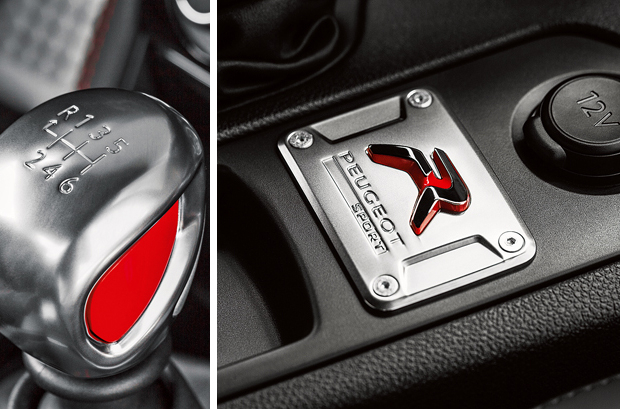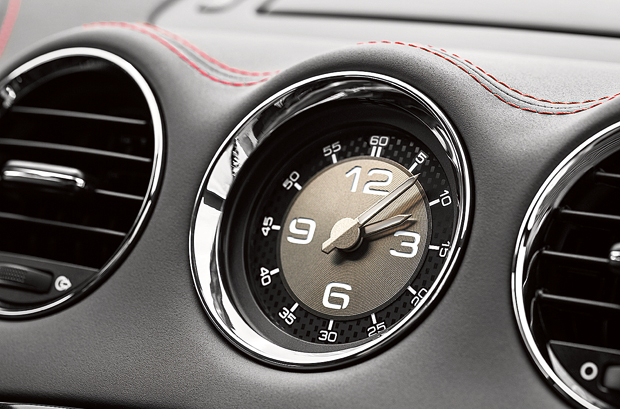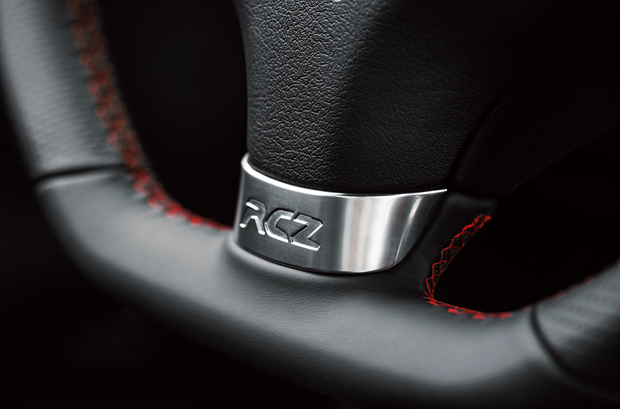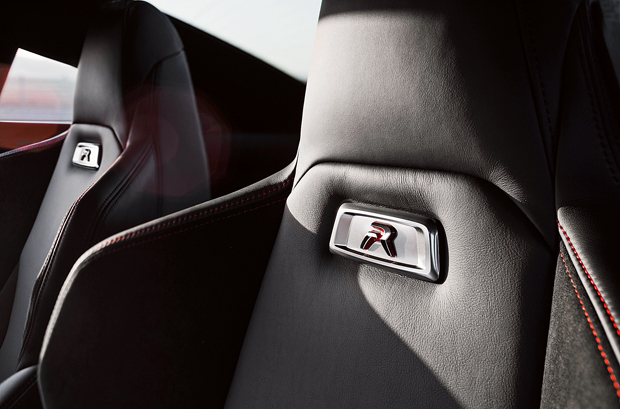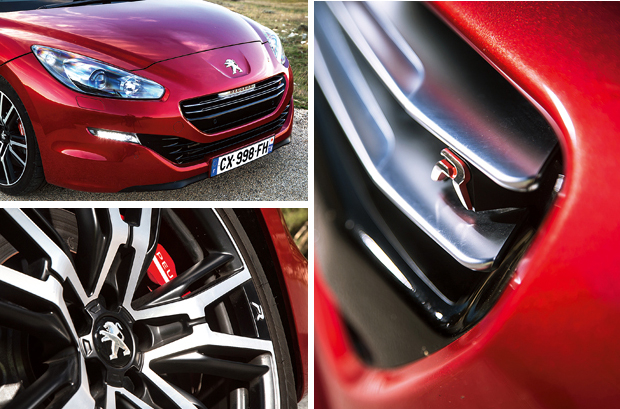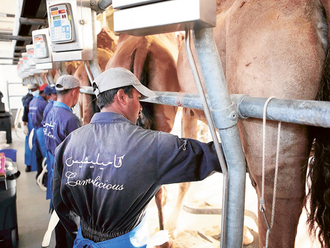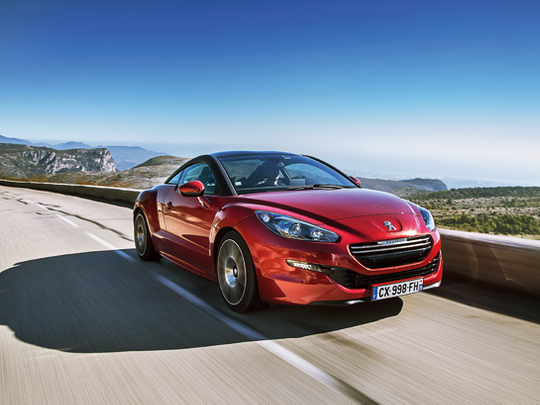
The last time Peugeot Sport (the French company’s motorsport division responsible for rallying, sportscar racing including Le Mans and even the firm’s Pike’s Peak entries) had anything to do with a road car it was the early Eighties and the model in question was the rather rare road-going version of the 205 T16. Built solely to homologate the Group B rally car of the same name the mid-engined, four-wheel-drive special had very little in common with the regular front-engined, front-drive Peugeot 205 hatchback of the day.
Fast-forward some 30 years and the Peugeot Sport name is being bandied about at the launch of a new version of the pretty Peugeot RCZ coupé. The RCZ R may be similar in many ways to the company’s one-make series racer, the RCZ Cup, but it’s a conventional, unlimited production model that is, in effect, a lightly modified variant of an existing car. Is it something the motorsport arm should be proud of or is it a cynical marketing exercise?
First up, the engine; the RCZ R is powered by a turbocharged 1.6-litre petrol unit, much like that in the regular RCZ. It retains a twin-scroll turbocharger, but it’s not just a case of upping the boost. Peugeot Sport has strengthened the bottom end of the engine considerably to cope with the extra stresses, including polymer-coated big end bearing shells, which is apparently a world first for a production car. They’re patented by Mahle Motorsport, which is also responsible for the forged-alloy pistons, constructed from a Formula One grade of aluminium.
Sounds impressive, as do the official figures. Peak power is 270bhp at 6,000rpm (eclipsing the 205 T16 road car, which had a paltry 200bhp), while maximum torque of 330Nm is produced all the way from 1,900rpm to 5,500rpm. Those numbers are also considerably higher than is available in the RCZ Cup track car. It’s no wonder the 0-100kph time ducks under the six-second barrier. That claimed 5.9-second figure feels conservative when you string out the engine to the redline in every gear away from rest.
It shouldn’t be a surprise given the width of the torque curve, yet the delivery of all that performance is wonderfully linear and surprisingly smooth. The RCZ R burbles along in traffic as happily as a normal family car, yet it brings the horizon closer at an eye-widening pace with the merest flex of your right foot. And it doesn’t seem to matter which gear you’re in for meaningful acceleration either, as there’s no flat spot in the engine’s delivery.
Smooth as the performance is, the RCZ R is much more uncouth than its siblings. Even at idle the engine and exhaust are loud — possibly too loud for some. Blame the unique steel exhaust manifold and the rest of the new exhaust system for that. At speed it’ll be appreciated, of course, and enthusiasts will love it. But this car isn’t all about straight-line speed. In an ideal world the RCZ R would have had four-wheel drive, but that was never going to happen, so many will write it off as having too much grunt for a front-wheel-drive car. Don’t be too hasty.
Built into the six-speed manual gearbox up front (there’s no automatic option) is a Torsen mechanical slip differential, and this transforms the driving experience. Approach a tight corner with gusto for the first time, squeeze the brakes (larger than before and fade-free in our hands) to adjust your entry speed, wait to see the exit and then feed the throttle back in and you may wonder what the fuss is all about, as the RCZ R goes around in a fuss-free manner with no drama. Is it too clinical?
Up the pace considerably and it reveals its ability. Next time into the same corner, scrub off less speed and just turn in. The front tyres grip, the rear stays resolutely on line and you can pretty much unleash the full engine output on the front tyres as soon as the nose is turned in. There’s no unseemly wheelspin from the inside wheel, as power is diverted to the outer, and it just grips and goes where you’re pointing the steering wheel. There’s remarkably little tug at your arms either, so it isn’t a tiring car to drive quickly on a twisting road.
A different look: 2014 Nissan Qashqai
2014 Chevrolet Camaro ZL1 driven in Dubai
2014 Nissan Patrol LE driven
Yet it is huge fun. Thanks to the extra traction afforded by the limited slip differential, Peugeot Sport was able to reprogram the RCZ’s stability control system, meaning it intervenes later, allowing the driver to feel part of the action for longer. Now, clearly a rear-wheel-drive car has the potential for more attitude adjustment in the corners, but the RCZ R is still a compelling coupé, which is considerably more appealing to the driving enthusiast than anything else in the Peugeot catalogue — even the new 208 GTi. No wonder the go-ahead has been given for 208 R and 308 R models with the same remit.
But while the RCZ R delivers on the Peugeot Sport promise, it isn’t an extreme car that’ll only appeal to petrolheads. Despite a weight reduction of 17kg in comparison to the 200bhp RCZ coupé, it’s no stripped-out track-biased special. The interior is the most luxurious in the line-up, featuring satellite navigation, climate control and all the electronic toys you could ask for. Importantly, it also comes with plenty of bespoke touches to help it stand apart from the regular RCZ. The most obvious (other than the Peugeot Sport decals and plaques) are the gorgeous sports seats. Monogrammed with the new ‘R’ logo they’re upholstered in soft black Nappa leather and suede-like Alcantara. There’s loads of shoulder support, too, to keep the occupants in place when the car is being driven as it was designed to be.
Elsewhere, red stitching on soft black leather dominates and there’s a tactile alloy gear lever with a red insert. The flat-bottomed steering wheel is a little large in diameter for our liking, but the steering system itself is well-weighted and offers up decent communication.
Behind the new front seats there are still two theoretical spaces for passengers, but it’s best to think of this area as extra luggage room.
The exterior has been breathed on too, to good effect. The bespoke 19in wheels are wider than on other RCZs and the ride height is 10mm lower, so that takes care of the stance. The already-distinctive roof arches are finished in matte black and the headlights (restyled as part of a range-wide face-lift) have a dark-tinted background to complement the new grille.
At the back, meanwhile, a larger fixed wing replaces the usual subtle automatically lifting item and twin exhausts poke out of a new aerodynamic diffuser. Peugeot claims that downforce has been increased at speed to aid stability with no worsening of drag through the air. The net effect is a more muscular appearance, building on the lithe and unique lines of the original RCZ profile.
Away from the relatively low-speed confines of a tight and twisting mountain road the RCZ R feels utterly planted as the pace increases. Responses to steering-wheel inputs are immediate, it feels stable on the highway at speed and the firm brake pedal endows the driver with plenty of confidence.
In short, it feels like a proper sportscar. Is it good enough to tackle the mighty Porsche Cayman? It’s not as delicate a driving tool, no, but it’s almost as fast. There isn’t really a direct rival in the Audi TT stable either, as all of Audi’s more powerful coupés come with quattro four-wheel drive. We’d certainly prefer to drive the RCZ R than any of the front-drive TTs on offer.
For true adversaries we need to look at the hot hatch world, to the likes of the Ford Focus ST or the Volkswagen Golf GTI, and the Peugeot is considerably more special feeling than most offerings — if not quite so practical. But since when did Peugeot Sport concern itself with practicalities?



